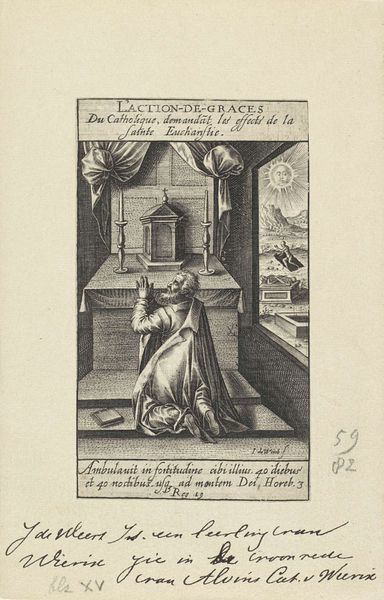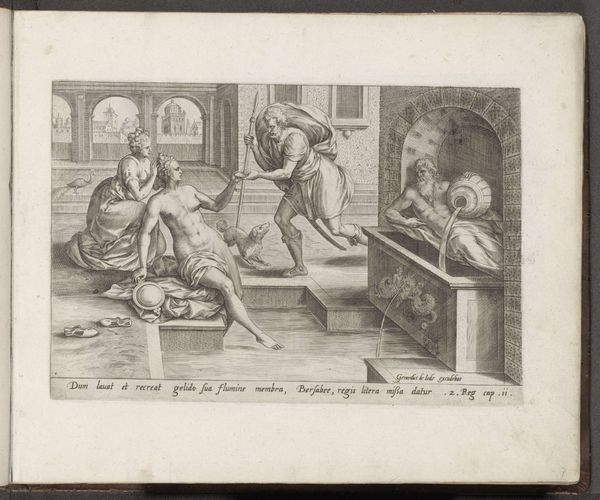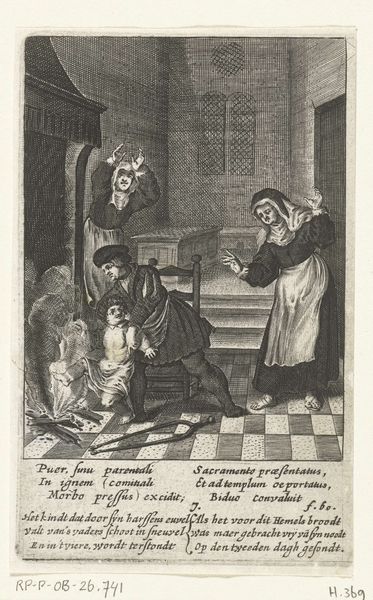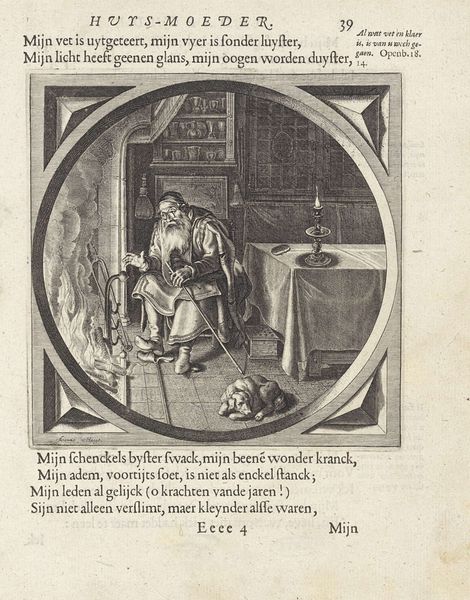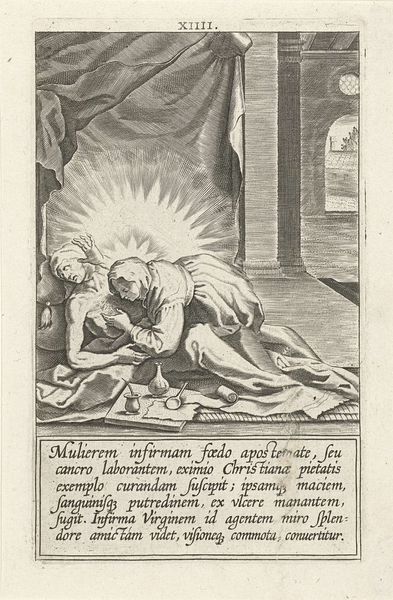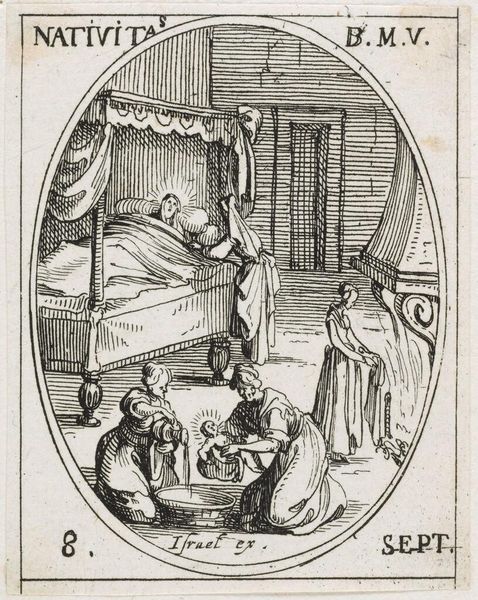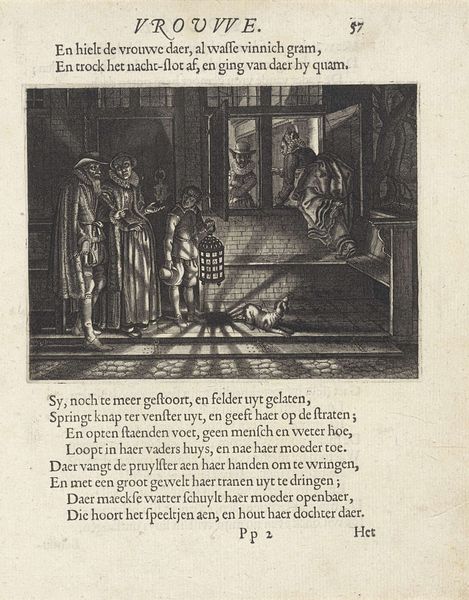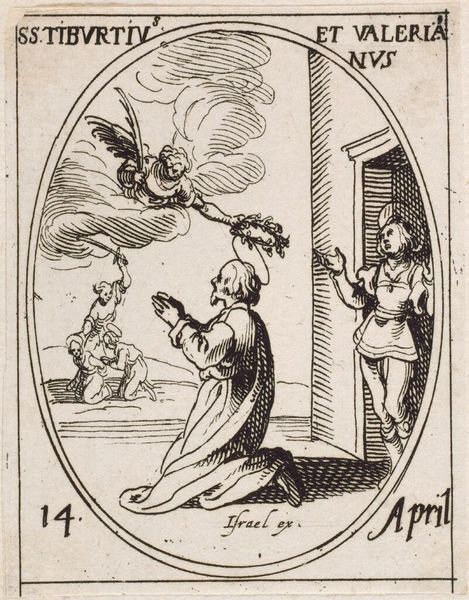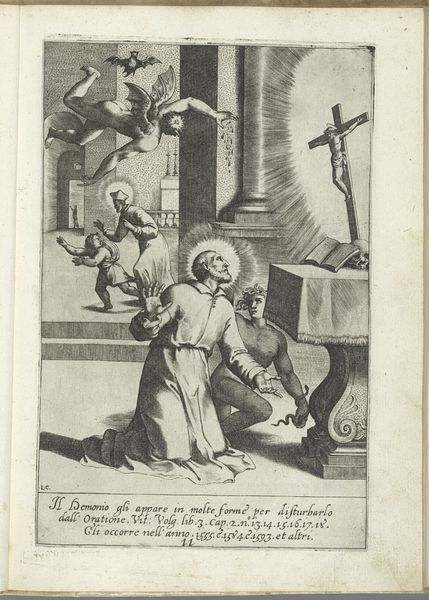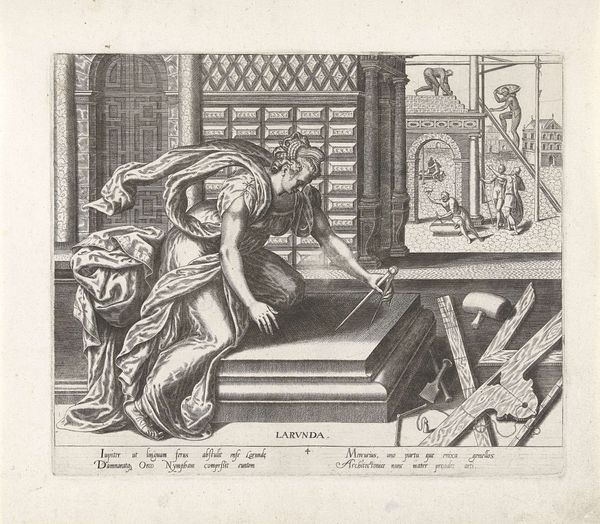
engraving
#
aged paper
#
toned paper
#
allegory
#
baroque
#
old engraving style
#
figuration
#
personal sketchbook
#
line
#
history-painting
#
engraving
Dimensions: height 103 mm, width 60 mm
Copyright: Rijks Museum: Open Domain
Editor: This engraving, "Biecht," which I believe translates to "Confession", by Jacob de Weert, created sometime between 1600 and 1617, strikes me as incredibly formal. The figure kneeling before the confessional looks so still, so posed. What do you see in this piece that stands out? Curator: The formality is precisely the point. Considering the social context of the time, engravings like these weren't simply artistic expressions, but served a distinct didactic function, reinforcing specific religious practices and moral codes. The image portrays not just the act of confession, but the ideal of it. Editor: So it's like a PR piece for confession? Curator: In a way, yes. Think about the Counter-Reformation and how the Catholic Church sought to reaffirm its authority. Images like this were circulated to promote adherence to sacraments. Consider the strategic placement of text within the image. How does that influence our reading? Editor: I guess it adds another layer, it feels very deliberate to include a latin phrase about death, before confessing, with the artist’s name attached, making it appear… sanctioned? Almost official. I hadn't thought about engravings being used for anything beyond just art. Curator: Exactly! Understanding the historical function gives the image much greater meaning. We're not just viewing a scene, but witnessing a visual argument meant to influence behaviour and strengthen the Church's hold. Is this shift in perspective something you will remember moving forward? Editor: Definitely. It is easy to forget that pieces served purposes that weren't entirely aesthetic. It changes how I perceive similar works. Thanks for highlighting this social and political dimension, that's eye-opening.
Comments
No comments
Be the first to comment and join the conversation on the ultimate creative platform.
